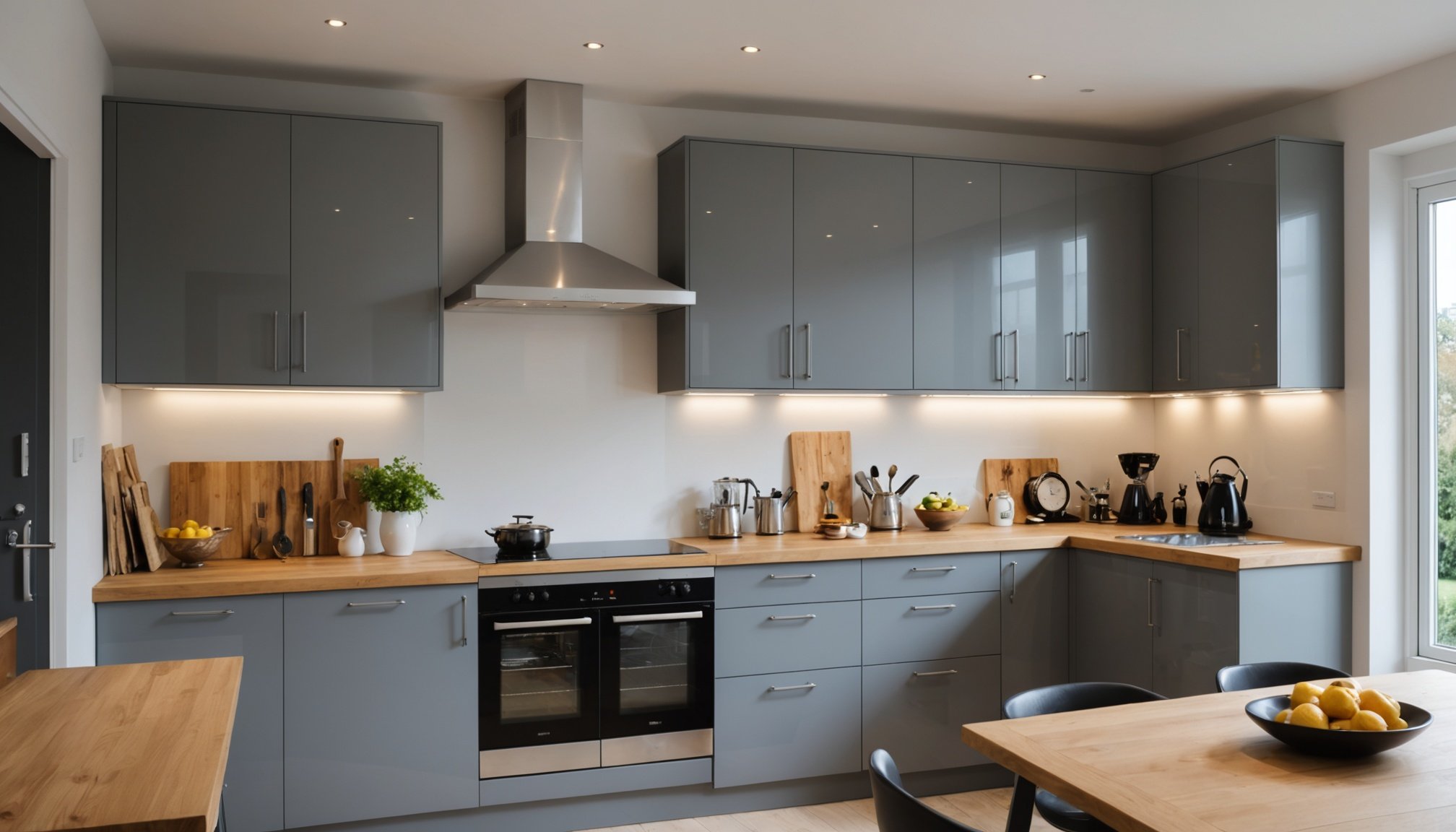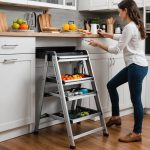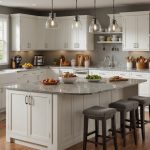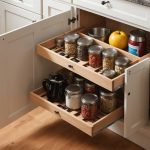Selecting the perfect kitchen hood in the UK involves more than aesthetics; it requires understanding your cooking habits and ventilation needs. With various styles, sizes, and functionalities, it can feel overwhelming. However, considering key factors like airflow, noise level, and energy efficiency can simplify your decision-making process. Discover how to choose a kitchen hood that enhances your culinary experience while seamlessly fitting into your home, ensuring you make an informed purchase that meets your unique requirements.
Understanding Kitchen Hood Basics
Exploring the essentials of kitchen ventilation systems.
Have you seen this : Discover the Top Anti-Slip Floor Mats for Commercial Kitchens in the UK: Safety and Style Combined!
Types of Kitchen Hoods
Kitchen hoods are essential for maintaining air quality and ensuring cooking efficiency. They come in various types including ducted, ductless, wall-mounted, and island models. Ducted hoods are connected to an external vent, making them effective at removing smoke and odors. In contrast, ductless hoods use filters to clean the air and recirculate it back into the kitchen. Wall-mounted hoods are attached to the wall above your stove, while island hoods are designed for cooktops located on kitchen islands.
Importance of Kitchen Ventilation
Proper kitchen ventilation is crucial not only for removing unwanted odors and smoke but also for maintaining a healthy cooking environment. It plays a significant role in reducing humidity and preventing the buildup of grease, which can affect both air quality and cooking efficiency.
Have you seen this : Essential Spices Every UK Home Cook Needs for Flavorful Everyday Meals
Key Terminology
- CFM (Cubic Feet per Minute): Measures the airflow efficiency of a hood.
- Filter: Essential for ductless models to trap grease and odors.
- Noise Level: Important for ensuring a comfortable cooking experience.
Understanding these terms and the types of kitchen hoods can help in making informed decisions for your kitchen setup.
Key Factors to Consider
Exploring essential considerations for kitchen hood installation.
Measuring Your Kitchen Space
Before installing a kitchen hood, accurately measuring your kitchen space is crucial. Begin by assessing the available area above your stove. Ensure the hood's width matches or exceeds the stove's dimensions for optimal performance. The hood should ideally be installed 24 to 30 inches above the cooktop to maximize its efficiency.
Matching Hood Size with Stove Dimensions
Choosing the right kitchen hood size is vital. A hood that is too small may not effectively capture smoke and odors, while one that is too large can overwhelm the space. To determine the correct size, measure the width of your stove and select a hood that matches or slightly exceeds this measurement.
Kitchen Hood Size Considerations:
- Match hood width with stove width
- Ensure proper height above cooktop
- Consider kitchen layout
Understanding Extraction Rates
The extraction rate is a key factor in evaluating a hood's performance. Measured in CFM (Cubic Feet per Minute), it indicates how much air the hood can move. A higher extraction rate is beneficial for larger kitchens or those with heavy cooking activities. Selecting the right extraction rate ensures efficient removal of smoke and odors, contributing to a healthier kitchen environment.
Noise Levels and Performance
Exploring the impact of sound in kitchen hoods.
Understanding Decibel Levels
When selecting a kitchen hood, understanding its noise levels is crucial for maintaining a comfortable cooking environment. Decibel (dB) levels measure the intensity of sound produced by the hood. A typical conversation is around 60 dB, while a noisy hood can exceed 70 dB, potentially disrupting your kitchen experience.
Quiet vs. Noisy Models
Choosing between quiet and noisy kitchen hood models can significantly impact your kitchen's ambiance. Quiet models often range from 40 to 60 dB, providing a more pleasant environment. In contrast, noisier models may hinder conversation and increase stress levels. Here's a comparison:
| Model Type | Decibel Level (dB) | Comfort Level |
|---|---|---|
| Quiet | 40-60 | Comfortable |
| Noisy | 70+ | Disruptive |
Importance of Sound Ratings
Sound ratings play a vital role in determining the right kitchen hood for your space. A lower dB rating ensures a quieter operation, enhancing kitchen comfort. Prioritizing sound ratings in your selection process helps create a harmonious cooking environment, allowing you to focus on culinary creativity without the distraction of excessive noise. By considering these factors, you can make an informed decision that aligns with your kitchen's needs.
Design and Aesthetic Considerations
Exploring style and material options for kitchen hoods.
Available Design Styles
When selecting a kitchen hood, it's essential to consider the available design styles that can enhance your kitchen's ambiance. Options range from traditional designs, which often feature ornate details, to modern styles characterized by sleek lines. Minimalist designs emphasize simplicity and functionality, offering a clean look that fits well in contemporary spaces.
Material Choices
The choice of material significantly impacts the aesthetics of your kitchen hood. Stainless steel is a popular option for its durability and timeless appeal, while glass adds a touch of elegance and sophistication. Wood can provide a warm, rustic feel, making it ideal for traditional or country-style kitchens. Each material offers unique benefits and can complement different kitchen décors.
Complementing Kitchen Décor
Choosing a hood that complements your kitchen décor involves thoughtful consideration of both style and material. A stainless steel hood can seamlessly integrate into a modern kitchen, while a wood hood might better suit a traditional setup. Here are some tips:
- Match the hood's style with your kitchen's overall theme.
- Consider the color and finish of other appliances.
- Balance functionality with aesthetic appeal.
By aligning your choice with these factors, you ensure a harmonious and visually appealing kitchen design.
Energy Efficiency and Sustainability
Exploring the eco-friendly impact of kitchen hoods.
Energy Efficiency Ratings
Understanding energy efficiency ratings is crucial when selecting a kitchen hood. These ratings indicate how effectively a hood uses power, helping you identify models that reduce energy consumption. Energy-efficient kitchen hoods often feature advanced motor technology and LED lighting, contributing to lower electricity bills and a reduced carbon footprint.
Benefits of Energy-Efficient Models
Energy-efficient models offer significant long-term savings. By consuming less power, they not only cut down on utility costs but also support environmental sustainability. These models often come with features such as variable speed controls and automatic shut-off, enhancing their efficiency further.
- Lower electricity bills
- Reduced carbon footprint
- Enhanced performance features
Eco-Friendly Options and Sustainable Materials
Exploring eco-friendly options involves considering sustainable materials used in kitchen hoods. Many manufacturers now offer hoods made from recycled stainless steel or other sustainable materials. These eco-friendly choices not only minimize environmental impact but also provide durability and style.
"Choosing sustainable materials in kitchen hoods is a step towards a greener kitchen."
By prioritizing energy-efficient kitchen hoods and eco-friendly materials, you contribute to a more sustainable lifestyle, while enjoying the benefits of modern technology.
Installation Tips and Considerations
Navigating the complexities of kitchen hood installation.
Step-by-Step Installation Guide
Installing a kitchen hood can be a rewarding project if approached methodically. Begin by measuring the area to ensure the hood fits perfectly. Securely mount the bracket on the wall, then attach the hood. Connect the ductwork for a ducted model or install filters for a ductless option. Finally, connect the electrical wiring, ensuring all connections are secure.
Common Installation Mistakes to Avoid
Avoiding common pitfalls is crucial for a successful kitchen hood installation. Ensure the hood is mounted at the correct height, typically 24 to 30 inches above the cooktop. Incorrect ductwork installation can reduce efficiency, so double-check connections. Avoid using flexible ducting, which can hinder airflow.
- Incorrect height placement
- Poor ductwork connections
- Using flexible ducting
DIY vs. Professional Installation
Deciding between DIY installation and hiring a professional depends on your comfort level with home improvement tasks. DIY can be cost-effective but requires careful attention to detail. Conversely, professional installation ensures precision and reliability, especially for complex setups.
"A professional installer can guarantee optimal performance and safety."
Whether opting for DIY or a professional, understanding these considerations helps ensure a successful kitchen hood installation.
Product Comparisons and Buyer Mistakes
Exploring options and avoiding pitfalls in kitchen hood selection.
Comparison of Top Kitchen Hood Brands
When considering kitchen hood comparisons, it's essential to evaluate top brands and models. Brands like Bosch, Whirlpool, and Samsung offer various features, from high CFM ratings to quiet operation. Bosch is known for its sleek design and energy efficiency, while Whirlpool focuses on affordability and reliable performance. Samsung combines cutting-edge technology with stylish aesthetics.
| Brand | Key Feature | Price Range |
|---|---|---|
| Bosch | Energy efficiency | $$$ |
| Whirlpool | Affordability | $$ |
| Samsung | Advanced technology | $$$$ |
Common Buyer Mistakes
Avoiding common buying mistakes ensures a satisfactory purchase. Many buyers overlook the importance of CFM ratings, leading to inadequate ventilation. Others may ignore the noise level, resulting in a disruptive kitchen environment. Failing to match the hood size with the stove can also hinder performance.
- Overlooking CFM ratings
- Ignoring noise levels
- Mismatching hood size with stove
Importance of Reviews and Feedback
Reading reviews and customer feedback is crucial when selecting a kitchen hood. They provide insights into real-world performance and potential issues. A highly-rated model often indicates reliability and effectiveness, helping you make an informed decision. Prioritizing these reviews ensures you choose a product that meets your needs and expectations.











